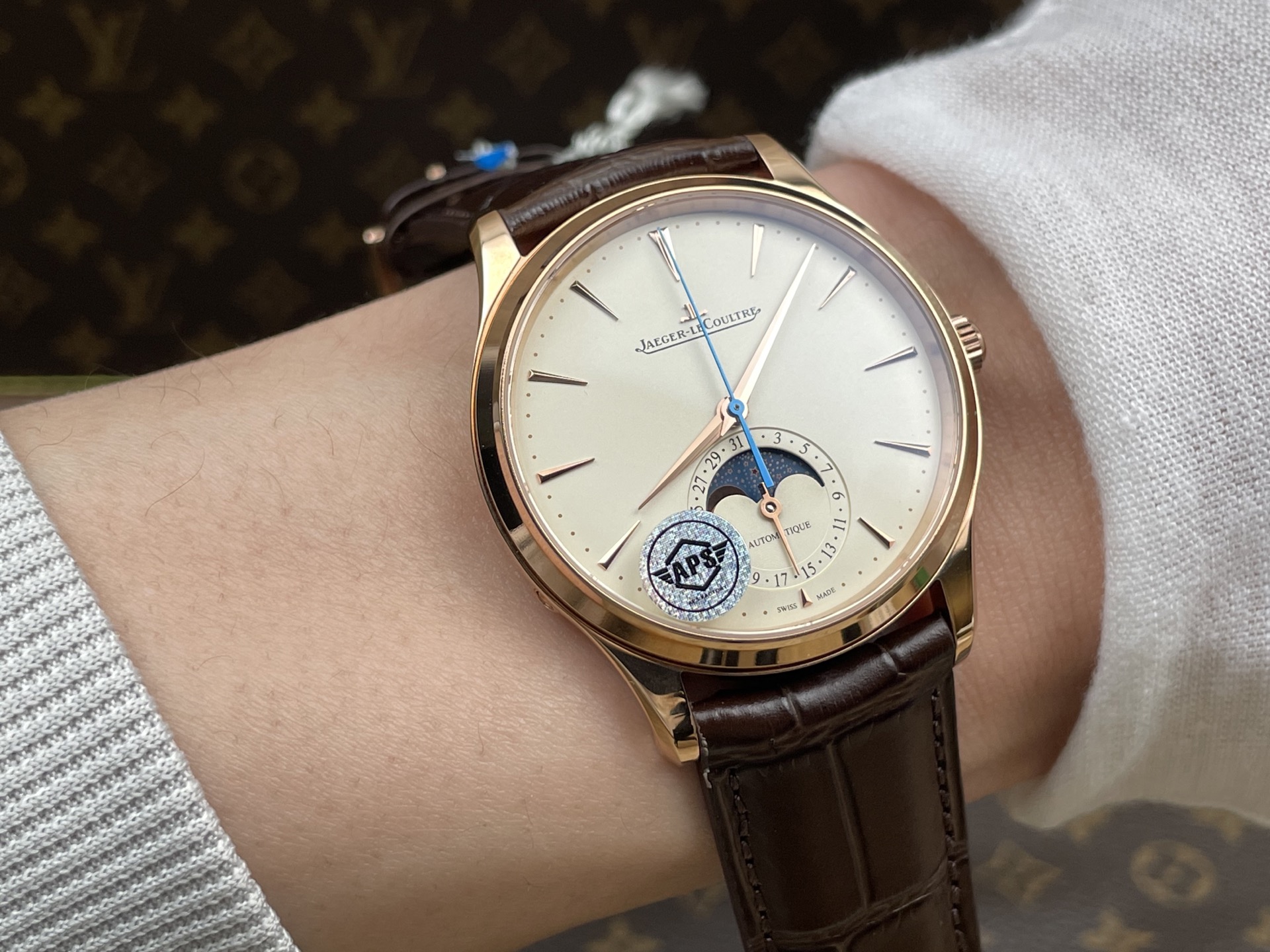In the ever-evolving world of luxury horology, Jaeger-LeCoultre’s Master Ultra Thin Moon Phase stands as a beacon of innovation and refinement. The latest iteration, featuring the APS upgrade, introduces a host of enhancements that underscore the brand’s commitment to blending tradition with modernity. This article delves into the nuanced upgrades and the broader implications these changes have within the watch industry, examining not just the watch itself but the economic, ethical, and psychological dimensions surrounding luxury watchmaking.
The Technical Leap: Embracing the Integrated Movement
Central to the upgraded Master Ultra Thin Moon Phase is the integration of the cal.925 movement. This advancement marks a significant leap in technical sophistication, offering improved stability and precision. Such stability is critical in a high-complication watch, where even the slightest deviation can disrupt the delicate harmony of its intricate functions. By refining the movement, Jaeger-LeCoultre not only underscores its technical mettle but also raises consumer expectations about what high-end watches should deliver in terms of performance.
Aesthetic Refinements: More Than Just a Facelift
Visually, the new version boasts a redesigned moon phase disc—a subtle but impactful overhaul that elevates the dial’s aesthetic appeal. The metamorphosis extends to the watch’s strap, now featuring the latest quick-release mechanism, enhancing both convenience and wearer comfort. Furthermore, the buckle’s increased curvature signifies a thoughtful consideration of ergonomics, which adds to the wearer’s experience by balancing luxury with practicality.
Material and Design: Elevating Luxury
One of the most striking upgrades is the dial logo’s transformation from printed insignia to a metallic emblem. This change is more than aesthetic; it symbolizes a shift towards a tactile engagement with the brand, enhancing the overall luxury feel. As consumers become more discerning, such details play a vital role in reinforcing brand loyalty and perceived value.
Ethical and Economic Considerations
These enhancements, while catering to high-end consumers, also evoke discussions around economic and ethical dimensions. The luxury watch market, often critiqued for its opulence, faces scrutiny for promoting exclusivity and consumerism. Yet, from an economic perspective, such innovations sustain heritage brands by differentiating them in a fiercely competitive market. The challenge lies in balancing these dynamics without alienating ethically conscious consumers who increasingly value transparency and sustainability.
The Power of Branding and Consumer Psychology
Branding is pivotal, as seen in Jaeger-LeCoultre’s strategic updates that align with evolving consumer tastes. The shift to a metallic logo, for instance, can be interpreted as a response to a consumer base that yearns for tangible luxury and authenticity. This aligns with the psychology of luxury consumption, where the product’s story and intangible aura often outweigh purely material considerations. By weaving narrative into design, Jaeger-LeCoultre enhances its appeal among collectors and connoisseurs alike.
Personal Value and the Collector’s Perspective
For collectors, the new Master Ultra Thin Moon Phase offers a unique proposition. It’s not merely an acquisition of a watch but an investment in a storied brand’s legacy. The upgrades enhance not only the watch’s immediate value but its potential as a cherished heirloom. The interplay of innovation and heritage appeals to collectors who see their watches as extensions of personal identity, reflecting not just wealth but a refined taste and appreciation for timeless craftsmanship.
In conclusion, the APS upgrade of the Jaeger-LeCoultre Master Ultra Thin Moon Phase is more than a mere product evolution—it is a reflection of the luxury watch industry’s trajectory towards integrating cutting-edge technology with timeless elegance. This watch encapsulates the delicate balance brands must maintain between honoring tradition and embracing modern advancements, all while navigating the intricate landscape of economic, ethical, and psychological considerations.








